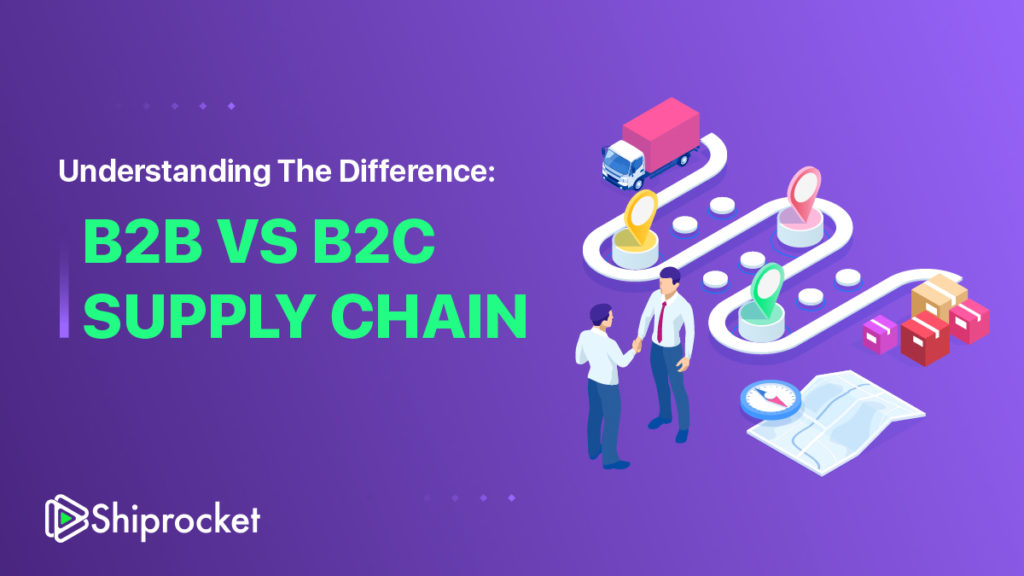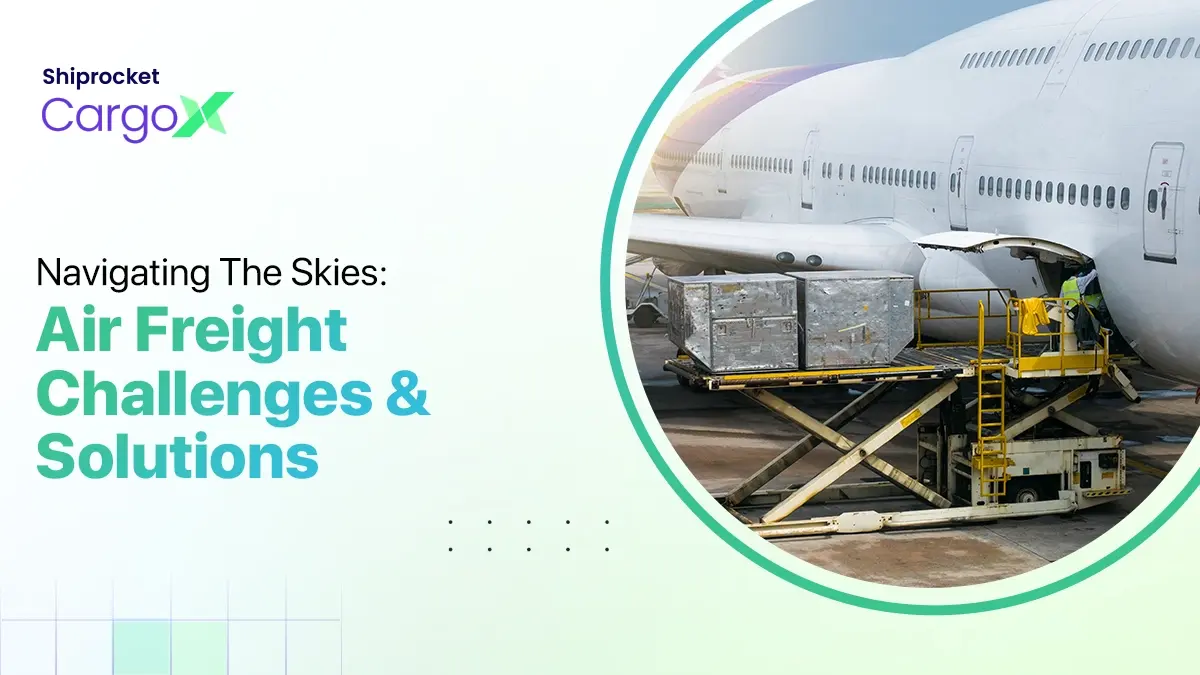Understanding the Difference: B2B vs. B2C Supply Chain
Gone are the days when it took months to deliver goods from one place to another. With the change in time and technology, it has now become easy to provide the products and services in no time. There are multiple options available like Same-day Delivery, Standard Delivery, Midnight Delivery, and many more. You don’t have to bother about the product delivery; everything is just a click away! All you need is a good supply chain model. A growing business needs to have a productive supply chain that can enable information technology. Now the question arises, why is it necessary? To understand this let’s know what the supply chain is?

Overview Of Supply Chain
A Supply Chain is a connected process of making and selling goods from the initial stage of supplying the raw materials to deliver finished goods to the customer. This operation plays an integral part for any company hoping to compete. It is an expansive and complex undertaking that ensures that each partner, i.e., suppliers to manufacturers and beyond, performs well. Effective supply chain management combines change management, collaboration, and risk management, which helps create alignment and communication between all the entities. Hence, the purpose of the supply chain is to get goods produced and distributed quickly and efficiently.
Four Elements Of Supply Chain
An adequately designed supply chain strategy helps you be the best in the market and do comprehensive business. Below are the mentioned four key elements which will help you to improve customer relationships and satisfaction:
1. Integration: It is the brain and heart of the supply chain. It’s the technology process that closely coordinates in the supply chain process. The communication and the information platform should work seamlessly for accurate and reliable information on all the supply chain activities to avoid delays, shortages, and interruptions.
2. Operations: Day to Day operations are the backbone of the work. It requires accurate and real-time tracking of your inventory and production schedules. Monitor and align the operations undertaken to ensure everything remains on track and facilitate a smoother and less expensive path to fulfillment.
3. Purchasing: You cannot make something from anything. So having the right product, in the correct quantity, and at the right time is essential. It’s the process of acquiring materials components to fulfill the requirements of the enterprise.
4. Distribution: The transport, delivery, and return of goods is a component of your supply chain that should always be simplified, optimized, and corrected for better client service. Hassle-free pickup/return service and timely delivery of goods to end-users and consumers are crucial.
There are two broad categories of business relationships for facilitating the sales of goods and services. B2B is the business-to-business category, and B2C is the business-to-consumer category. In B2B, the transaction takes place between one business to another, while in B2C, the transaction takes place between the company to the end-user, i.e., the consumer.

Critical Differences in B2B vs. B2C Supply Chain
➢ The bargaining level between the buyer and the seller within the supply chain differs. It includes negotiations between buyer and seller, the length of the supply chain, the number of sales, and the number of customers involved. In a B2B supply chain, the business generally has greater bargaining power.
➢ B2B supply change will often involve the two companies concerned with one selling a product or service directly to the other. In contrast, B2C supply chains are usually longer because they involve numerous producers, wholesalers, and retailers.
➢ B2B involves the sale of bulk services or inventory stock required by Business clients for production purposes or resale as a part of a retail strategy.
➢ Sales volumes are higher during a B2B supply chain than during a B2C supply chain. The B2B supply chain relationships are proportionately more important than relationships in a B2C supply chain.
➢ There are generally fever customers in a B2B supply chain, and relationships are developed around mutually beneficial arrangements to help manage performance, establish accountability, and encourage continuous improvement. The much greater number of customers in a B2C relationship has important implications for how a business is driven to gain repeat customers and achieve and maintain brand loyalty.
Effective Supply Chain Model in eCommerce
Supply chains play a crucial role in getting a product or component to another user. The most common transactions are business to consumer (B2C) and business to business (B2B) when selling goods and services.
In business-to-consumer (B2C), the goods and services are sold to a consumer who is the product’s end-user. However, in business-to-business (B2B), the goods and services are traded between companies. The relationships are integral to businesses. And it’s essential to understand how their supply chains vary to suit their business model. Often you’ll experience differences within the negotiation approach, such as how long the supply chain lasts, what percentage of customers are involved, and, therefore, the number of things ordered.
Today, modern consumers expect to receive their orders faster than ever before. They want the early delivery of their product/service. The digital marketplace continues beyond the traditional retail business model, and that’s why an effective, hassle-free, transparent, and advanced supply chain medium is required. To fulfill your needs, you can partner with the next generation shipping solutions like shiprocket, which offers the best-in-industry shipping services.
Is B2B At an Advantage?
Even though B2B supply chains may learn some valuable lessons from their B2C counterparts, B2B supply chains do have some clear advantages:
B2B businesses sell in more enormous quantities. So, they can establish arrangements with their shipping partner at standardized shipping rates. And, because companies rely so heavily on products shipped in and out of their facilities regularly, it often makes sense to invest capital in their supply chain process.
While the B2B supply chains have a critical human element, the B2C supply chains have a leg up from the technology point of view. The technology can provide unique opportunities to answer questions, provide customer service resources, and an avenue to manage the supply chain at the end of the day.
On the other hand, the B2B supply chain is fuelled by relationships. In the B2B space, many companies have grown up with each other and deeply established their strategies, growth opportunities, and success.
CONCLUSION
Understanding changing customer needs and optimizing the eCommerce channels is critical for a B2B seller’s long-term success. It’s the new era where the market is tech-savvy. So, ignoring the digital forward competitors can put the business at risk. To avoid a crisis, it’s crucial to use technology-driven tactics for maximum customer reach. Delivering a seamless, transparent, and cost-effective experience throughout the supply chain benefits both the business making the sale and the customer purchasing. Ensure to have an advanced, transparent, and practical supply chain process.






